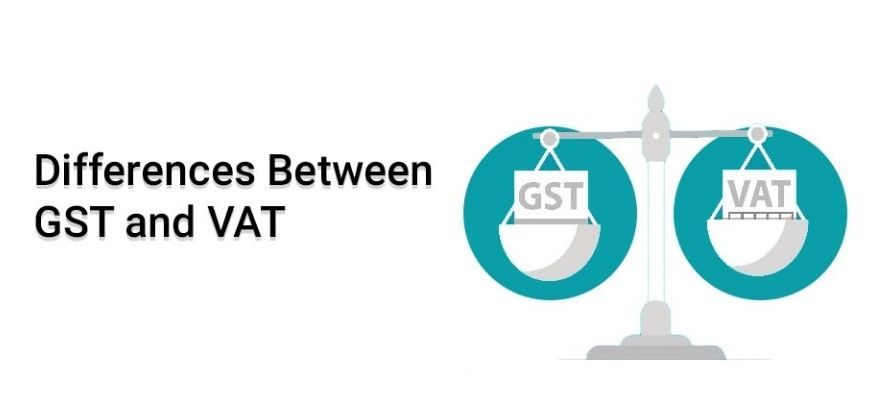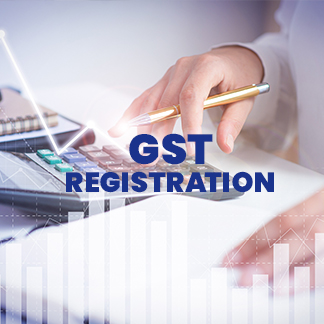Comparing GST and VAT

GST
222 week ago — 9 min read
The introduction of the Goods and Services Tax was one of the most significant and most fundamental changes within the Indian taxation system since Independence. Further, it brought a large variety of taxes under one umbrella and helped simplify the process of taxation. The GST effectively replaced the older versions of the Central and State taxes, that included the VAT, Excise and Service Tax. Since coming into effect in July 2017, the GST has revolutionised the Indian taxation system. Similarly, here’s a look at the difference between GST and VAT, the benefits of GST, and how GST has transformed the process of taxation.
What is Value Added Tax or VAT?
Value Added Tax, better known as VAT, is an indirect tax that came into effect in April 2005. As a concept, the value-added tax replaced the earlier system of taxation known as Sales Tax. VAT came into practice in a bid to integrate and create a single market within India for products and services. From June 2014, value-added tax became a norm within all states and union territories within the country, barring the Andaman and Lakshadweep islands. VAT applicability depends on the nature of the product, as since it is a State tax, the laws regarding VAT applicability rely on the State laws.
Disadvantages of Value Added Tax
- Leads to the cascading effect of tax
- End-consumer ends up paying more for the product or service
- Suppliers could not claim an Input Tax Credit for services under VAT
- Hard to implement and compute due to differences in VAT rates within different states in India
- Difficult to standardise as different states had different VAT laws
Impact of GST
The disadvantages brought on by VAT applicability led to the formation and inception of the Goods and Services Tax. The GST is a comprehensive, extensive and straightforward taxation system that unifies the nation. Moreover, GST is also a destination-based concept of taxation that eliminates the cascading effect, leading to better prices for consumers and suppliers. Additionally, the GST had a massive impact on the Indian economy as it removed several of the disadvantages and limitations brought on by VAT applicability.
Replacement of Value Added Tax by the Goods and Services Tax
|
S. No |
Tax Nature |
Old VAT System |
New GST Regime |
|
1 |
Central Taxes Subsumed |
Central Excise Additional Customs Duty Customs Service Tax |
Central Goods and Services Tax – CGST |
|
2 |
State Taxes Subsumed |
VAT Entertainment Tax Luxury Tax Lottery Tax State CESS Surcharge Entry Tax |
State Goods and Services Tax – SGST |
|
3 |
Custom Duties Replaced |
Basic Customs Additional Customs Duty Customs CESS |
Integrated Goods and Services Tax – IGST And BCD |
|
4 |
Inter-State Taxes |
Excise Duty Central Sales Tax Service Tax |
IGST |
|
5 |
Intra-State Taxes |
Excise Duty State VAT Service Tax |
CGST and SGST |
|
6 |
Applicability |
On manufacture and sale of goods/services |
On supply of goods/services |
Benefits of GST
- Eliminates the cascading effect of taxation
- Further, simple and straightforward process
- Easier accessibility as the entire process is online
- Lesser compliance norms and procedures
- Additionally, the defined and clear treatment of e-commerce companies
- Unified laws throughout the country
- Easier to implement, monitor, and check for compliance
GST and Cascading Effect
One of the biggest benefits of GST is that it removed the concept of cascading taxes. The cascading effect of taxation is the process by which a tax is levied on top of another tax levied on a product or service. Due to taxation at every step of the sale, certain times, products get taxed on their taxed values, leading to consumers and suppliers having to pay more than what is truly required. In such cases, tax is processed on a value that includes tax paid by the previous consumer, leading to double taxation. Hence, the end consumer has to pay tax on paid tax, called the cascading effect. However, since the inception of the Goods and Services Tax, such effects have been eliminated.
Difference between VAT and GST
|
S. No |
Goods and Services Tax |
Value Added Tax |
|
1 |
Applicable to services and goods both |
Applicable only for goods Service Tax is a separate tax applicable to services |
|
2 |
Levied at the time of supply of goods and services |
Levied at the time of sale of products |
|
3 |
Equally shared by State and Central Governments |
Held by the State in which the tax was collected |
|
4 |
Filing of returns happens every month |
Filing dates are on the 10th, 15th and 20th of the succeeding month |
|
5 |
Registration exemption for businesses with turnover less than INR 20 lakhs and 40 lakhs for services and goods respectively |
Registration exemption if turnover is less than INR 5 lakhs |
|
6 |
Online and Offline payment methods |
Offline payment only |
|
7 |
Avail Input Tax Credit |
No concept of Input Tax Credit |
|
8 |
Collected by consumer State |
Collected by Seller state |
|
9 |
Payable= GST levied – ITC |
Payable= VAT – VAT on input |
|
10 |
Transaction based tax system |
Summary based taxation system |
|
11 |
Results in the reduction of cost of goods |
Increase in cost of goods as traders cannot claim ITC, and due to the cascading effect of taxes |
|
12 |
A comprehensive method to cross-verify accounts and prevent evasion |
Lack of Cross Verifications to control Evasion |
As you can see, GST offers several key benefits when compared to the Value Added Tax.
Difference between VAT and GST with Example
Imagine there is a consultancy service that provides various services to their clients in India, including advice, funding, and financial consultancy.
Under the Value Added Tax regime:
- Service Value = INR 70,000
- Service Tax Rate = 15%
- Output Tax` = INR 10,500 (70,000*0.15)
- Office Supplies = INR 25,000
- VAT rate = 5%
- VAT amount = INR 1,250 (25,000*0.05)
- Total Tax = INR 11,750 (10,500+1250)
Hence, in this case, the consultant has to pay the entire INR 10,500 without deducting the INR 1,250 that he paid as VAT for his office supplies.
Under Goods and Services Tax Regime:
- Service Value = INR 70,000
- GST Rate = 18%
- Output Tax` = INR 12,600 (70,000*0.18)
- Office Supplies = INR 25,000
- GST rate = 5%
- GST amount = INR 1,250 (25,000*0.05)
- Total Tax/ Net GST = INR 11,350 (12,600-1250)
In this case, the GST paid on office supplies is set against the GST on the service provided, resulting in a net tax payable of INR 11,350. As visible, under the GST regime, the consultant has to pay INR 400 less, due to the elimination of the cascading effect.
Anthony key example here which highlights the standardisation brought about GST is as follows:
Under VAT Regime:
- Price = INR 3000
- Excise Duty Rate = 12.5%
- Excise Duty = INR 375
- Subtotal = INR 3375
- VAT Rate = 14.5%
- VAT Amount = INR 490
- Total Amount = INR 3865
Under GST:
- Price = INR 3000
- CGST Rate = 9%
- GST Amount = INR 270
- SGST Rate = 9%
- SGST Amount = INR 270
- Total Amount = INR 3540
Difference in taxation regimes = 3865-3540 = INR 325
Hence, the implementation of the GST will help with improving the economy and making goods and services more accessible and affordable for the public. Furthermore, the uniformity and standardisation brought about by the GST will help with making the process of tax payment simpler and more straightforward.
Also read: How to register for GST online?
To explore business opportunities, link with us by clicking on the 'Connect' button on our eBiz Card.
Disclaimer: The views and opinions expressed in this article are those of the author and do not necessarily reflect the views, official policy or position of GlobalLinker.
Posted by
Vakilsearch StaffGreetings! We would love to work with you and your company. We look forward to connecting with business houses and MSME's.
View Vakilsearch 's profile
SME Inspirations
Other articles written by Vakilsearch Staff
Know About the 4 Types of Partnership Firms
23 week ago
Most read this week



















Comments
Please login or Register to join the discussion